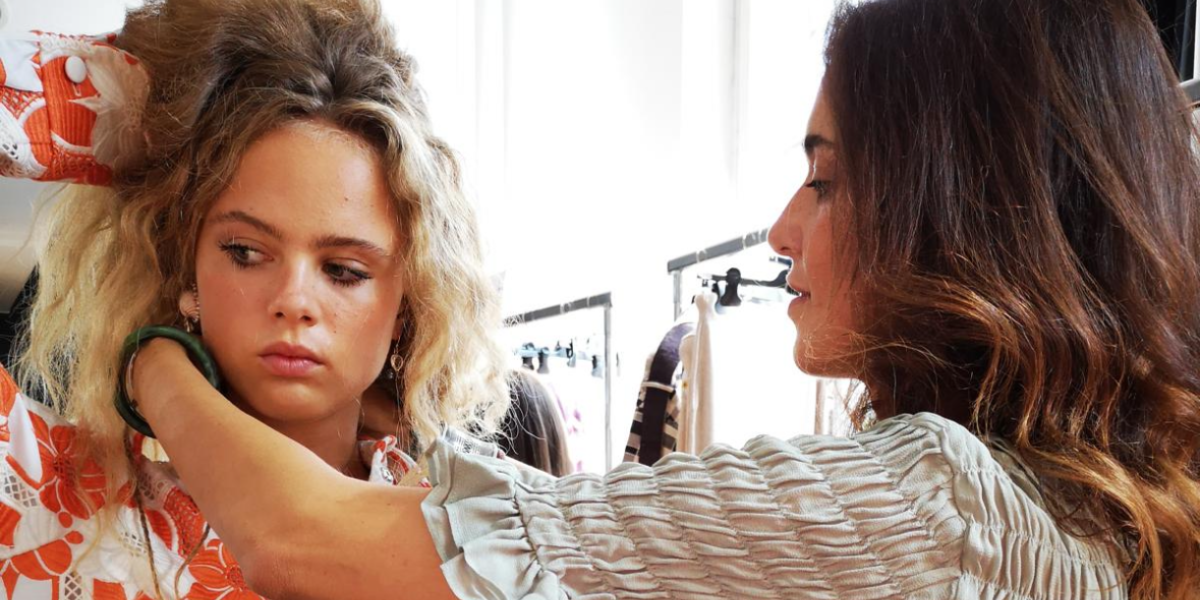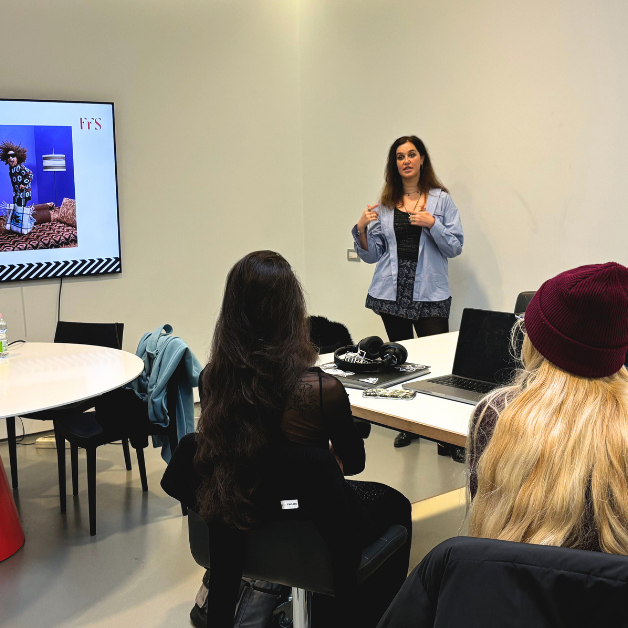Violetta Semino, Head Designer of Etro’s kidswear line, met with second-year BA Fashion Design students at Ferrari Fashion School. During the meeting, she shared the history of Etro, the iconic Italian fashion house famous for its Paisley pattern and craftsmanship, and discussed her professional journey, from working with brands like Prada and Dsquared2 to her creative leadership role in the kids’ collections.
Violetta also offered portfolio reviews of the students’ collections, providing practical advice and inspiration for designing pieces that combine creativity, functionality, and sustainability—key elements in children’s fashion design.
What inspired you to transition into children’s fashion after working extensively in womenswear, and how has this shift influenced your creative process?
The Etro kidswear collection is a new project that takes from each line of our lifestyle brand and keeps spreading the same message, dressing the future generation of little Etro lovers.
Remixing all the imputs of each line into a new coherent style, reinforcing the dna, while offering a new fresh and recognisable collection is a challange, that I enjoy even more than womanswear.
When designing for children, what are the key elements you prioritize to ensure the collection is not only stylish but also functional and child-friendly?
I believe children are born creative and naturally free spirits, and it’s important to ensure they never stop dreaming and feel empowered in their clothes.
Inspiring them with colors and patterns that spark their imagination, showing them the beauty of art and Italian style, and teaching them about the quality of garments and fabrics is the goal I strive for.
How do you approach creating a cohesive narrative or theme for a kidswear collection, and how does it differ from developing a womenswear line?
The development of collections always starts as a take-down, a mini me of the adult collection. Marco De Vincenzo is creating a whole new universe for Etro, renovating the maison’s codes.
Seasonal patterns guide the design into a specific atmosphere each season, which is then emphasized by models, accessories, and fabrics. I love visiting our archive to choose deadstock Etro fabrics, adding an upcycled and unique touch to the garments.
What are some of the biggest challenges you face when designing children’s collections, particularly in balancing brand identity with the expectations of both children and their parents?
Luckily, Etro already has a dégagé DNA that is parent-approved, full of recognizable patterns and iconic styles. An artsy dandy look suits both boys and girls perfectly for summer and winter, in a cool, fancy way for occasion wear and in a relaxed and stylish one for everyday.
For young designers interested in specializing in kidswear, what are the most important factors to consider when creating garments for children in terms of fabrics, fit, and practicality?
A big no to polyester, plastic, and synthetic fibers.
Natural fabrics that are energetically high, such as cotton, linen, and wool, are the best choice for kids and for the planet.
Always setting an example in the message and in the making with values, respect, and sustainability in all choices is essential for designing kidswear.














